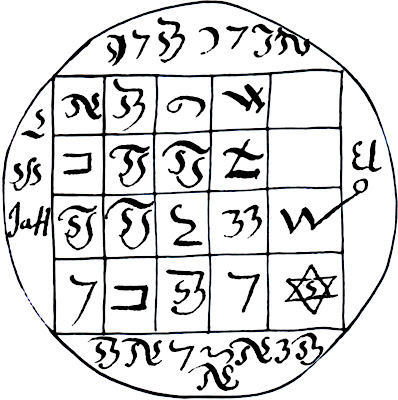This manuscript was obviously sent to me by my most magnanimous and magnificent magister of mysterious mercurial matters, Daniel Clark, who painstakingly saved the images from the Neurupinn City Museum and translated this introduction:
In this book the philosopher
(?) Bombast summarized his life's
work; his own title
indicates: “A little
book Theophrastus: Paracelsi.
He left his disciple as a happy memory a little book, for the sake of
worthiness, over all his
books and is also of no higher writing that among all his other writings. This
is the shortest and foremost in one composed by Theophrasto Paracelso Bombast
von Hohenheim Philosopho Medico." And he further
explained his writing: "More of Olympic
spirits citing treasure digging and other proven arts, partly copied from the
authorship of King Solomon and other proven arts.
A mode of use according to Theophrasto for his
disciple so that he can explore everything in heaven and on earth and in the
4th elements and through this mystery he has, may experience everything on this
earth and above and under the earth." The
book is about, among other things, "... how
to make, prepare and use the sacred Pentacula or Sigilla..."
or about "... making magic mirrors and
rules like such in which one can see visions or visions through all nature and
creatures." and is provided with
many mystical drawings.
This 19th century German manuscript, improperly categorized as a ”hexenbuch” (witch-book) has nothing to do with witchcraft or popular forms of magic, but rather cultured forms of magical practice. The website ascribes it to Paracelsus, but internal evidence shows an association to the Rosacrucian Order.
The first treatise (as far as I could tell) is the Paracelsian book dealing with Olympic spirits, a magical bell and four magical mirrors), the second deals with the Pentacles of Solomon and the third is an incomplete magical psalter, with missing characters.
Please stop asking me what every talisman does or if I tried them or if I can translate it for you. I can t read regular German, let alone old cursive.
Figures:













































No comments:
Post a Comment